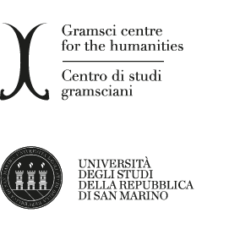In this third episode of the book market survey, we will try to explore reports and insights produced on the pandemic period, specifically for 2020-21. Continue reading “The impact of the pandemic on the book market, 3”
Category: Projects
Bookstores in Italy, commercial establishments and cultural strongholds, 2
In this second issue of the survey on the book market, we will try to explore the map of bookstores businesses in Italy; as for the in-depth study on the situation of reading, we decided to limit the analysis to data on 2019. The numerous reports and insights produced on the pandemic period will be the specific object of the next issue. Continue reading “Bookstores in Italy, commercial establishments and cultural strongholds, 2”
The Book Market in Italy, 1
Starting from Gramsci’s distinction between “ideological” and “economic” readers (Quaderni, 14, 62), we began a survey of the book market in Italy. To this end, we collected and selected quantitative data already available (Italian and, in part, also foreign, in order to propose an initial comparison). Alongside this activity, the Gramsci center for the humanities has also undertaken some initial investigations oriented towards a qualitative approach, addressing questionnaires and interviews to some qualified representatives of the sector.
The preliminary results of this work will be published in six issues on our website, in order to make available the data collected and offer a first partial mapping of the current situation, which could hopefully form the basis for future research and discussion.
The presentation and the collection of materials were edited by Andreas Iacarella.
Links six issues:
1, The book market in Italy;
2, Bookstores in Italy, commercial establishments and cultural strongholds;
3, The impact of the pandemic on the book market;
4, Independent booksellers in Italy: relaunch proposals and long-term trends;
5, From Italy to the world: some comparative insights on reading and bookstores;
6, Making the future of reading: a bookshop in transformation.
The first issue presents the situation of book production and reading in Italy, which appeared to us to be preliminary to delving into issues related to the book market.
Every year, ISTAT publishes the results of its survey on the production and reading of books in Italy. In January 2021, the report for 2019 was published, which also contains an update for the first period of 2020, in view of the specificity of the situation triggered by the Covid-19 pandemic.
The report shows that book production related to 2019 stood at an average of 237 books per day, thus almost 1.3 books per thousand inhabitants; of which 58.4% were new releases and 8.5% were new editions. In 2019, there were 1,706 companies or institutions that carried out publishing as their main activity; of these, 53% are considered “micro-publishers” (no more than 5,000 copies), 38.1% small publishers (maximum print run 100,000 copies), 6.8% medium publishers (print run no more than one million copies), 2.1% large publishers (print run more than one million copies). 59.1% of production in terms of titles (and 91.3% of circulation) was carried out by medium and large-scale publishers.
In terms of geographical distribution of companies, the North is in the lead, with 50.0% of publishers (31.3% in the Northwest and 18.8% in the Northeast), while the Center and the South stand at 28.7% and 21.2% respectively (14.7% in the South and 6.5% in the Islands). The regions with the highest number of publishers are Lombardy (20.6%) and Lazio (16.8%). The titles published by the publishers surveyed in 2019 correspond to 86,475, for a total of over 192 million copies printed [data on circulation could be profitably compared with ISTAT historical series on the subject]. In the face of this significant production, the quota of unsold copies remains considerable, but with a notable difference with respect to the type of publisher. The percentage of declared stock and returns is 26% for micro-publishers, 17.6% for small publishers, 6.9% for medium and 5.8% for large publishers.
The average cost of books was 19.84 euros in 2019; with about half of production (50.1%) consisting of works priced no more than 15 euros, and 28.7% of volumes priced between 10 and 15 euros. In terms of marketing channels, Italian online stores rank first (59.9%), just above independent bookshops (59.3%). Large and medium-sized publishers confirmed their preference for chain bookshops (82.9% for large and 70.7% medium-sized publishers, out of a total of 36.0%), whilst direct sales remained one of the channels preferred by micro-publishers (55.6%).
On the specifics of commercial and market aspects, it is useful to cross-reference Istat data with those offered by the Report on the State of Publishing in Italy 2020, edited by the Ufficio Studi dell’AIE – Associazione Italiana Editori. 2019 marked a return to pre-crisis economic levels, with a turnover of 3,036.6 million (up 3% on 2018, broken down as follows: 1,527.8 million for miscellaneous books, 769 for scholastic, 379 for digital and 360.8 for other), which confirms the book as the first cultural industry in Italy, alongside Pay TV. According to the AIE, sales channels see an increase in online stores (27%, compared to 24% in 2018), as well as in the export of publishing rights of Italian authors to publishers in other countries (+9% on 2018).
In terms of the readership aspect, the Istat report shows that 40.0% of the population aged 6 and older read at least one book during the year, 44.3% from 1 to 3 books, 15.6% from 12 books and up. 77.2% of readers remain tied exclusively to paper books, while 7.9% read only e-books or online books. In this regard, it should be noted that 45.3% of works published in print in 2019 were also made available in ebook version.
In 2019, the share of readers is highest among young people: 54.1% between 15 and 17 years old and 56.6% between 11 and 14 years old. The gender gap, which has been evident since 1988, also persisted, with the percentage of female readers standing at 44.3% and that of male readers at 35.5%. In absolute terms, the most affectionate readers are girls between the ages of 11 and 19 (at least one book a year for over 60% of the sample).
The influence of education and territorial location is confirmed on reading affection. There are 71.9% of readers among university graduates, compared to 46.1% among high school graduates and 25.9% among those with an elementary school diploma. As far as geographical distribution is concerned, 47.6% of residents in the Northwest and 48.1% of those in the Northeast have read at least one book. The average share of readers drops in the South (27.9%), while it is differentiated among the islands (25.9% in Sicily; 38.9% in Sardinia, which, however, drops by 5.8 percentage points compared to 2018). Also significant is the type of municipality, in part linked to the presence of businesses and libraries: in the central municipalities of the metropolitan area, around half of residents declare themselves readers (48.2%), a percentage that drops to 36.0% for municipalities with fewer than 2 thousand inhabitants.
Family background is also a determining factor: under the age of 18, 77.4% of children of parents who are readers and only 35.4% of children of non-readers are readers.
For complete data, see the full text of the ISTAT report and the collection of statistical tables used to compile it.
“A Terribly Lurking Interlocutor”: Giovanni Mastroianni, Historian and Philologist of Twentieth Century Philosophy
Il filo rosso. Dialoghi etico-politici col mio tempo, published in 2018 by Guida and edited by Nicola Siciliani De Cumis and Luigi Spina, offers us a substantial collection of texts by Giovanni Mastroianni: as many as fifty collected in the section Saggi e note, seven in the Testi e traduzioni one and two in the Appendix to conclude the volume of two tomes. This is a selection of texts published between 1976 and 2011 in a wide variety of journals, part of the rich bibliography of Mastroianni, consisting of over 200 entries and present in the first volume. Continue reading ““A Terribly Lurking Interlocutor”: Giovanni Mastroianni, Historian and Philologist of Twentieth Century Philosophy”
The potential of Transkribus for textual research, the opinion of Daniele Fusi
This is the third and last part of the interview with philologist Daniele Fusi on the Transkribus platform and the frontiers of electronic text analysis. In the first one, Dr. Fusi told us about his experience as a digital philologist and some programs used in his research field; in the second one, he explained the difference between digital text and digitalized text. Continue reading “The potential of Transkribus for textual research, the opinion of Daniele Fusi”
The distinction between digitalized text and digital text. Interview with Daniele Fusi.

This is the second part of the interview with philologist Daniele Fusi on the Transkribus platform and the frontiers of electronic text analysis. In the first one, Dr. Fusi told us about his experience as a digital philologist and some programs used in his research field.
In the first part of this interview, Dr. Fusi, you talked about a distinction between digitalized text and digital text. Can you explain it in more detail? Continue reading “The distinction between digitalized text and digital text. Interview with Daniele Fusi.”
Transkribus platform and the frontiers of electronic text analysis: the example of the Prison Notebooks
To electronically transcribe and make handwriting in Europe electronically analysable. These are the functions of the Transkribus platform, one of the initiatives carried out by the READ project, funded by the European Union’s Horizon 2020 Research and Innovation programme. Continue reading “Transkribus platform and the frontiers of electronic text analysis: the example of the Prison Notebooks”







